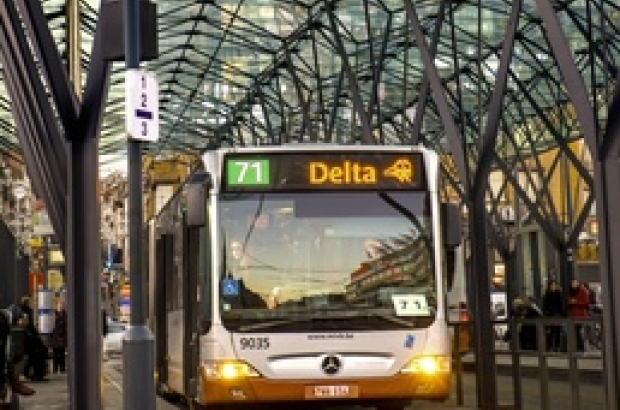- Daily & Weekly newsletters
- Buy & download The Bulletin
- Comment on our articles
Gridlock: the will-they-won’t-they story of Tram 71
In an upbeat video launched last February by Stib and Brussels' transport ministry, an idyllic world of tiny, plastic people go about their city lives drinking coffees and riding skateboards to the sound of cheerful whistling. A soothing voice tells us, “For a people-sized Ixelles… For more comfort inside and less noise outside… For new life in the streets of Ixelles, it’s time for tram 71.”
But so far the discussion about tram 71 hasn’t produced any less noise. Behind this pleasant picture of a kinder, gentler commune is a roiling debate between Brussels Capital-Region authorities and Ixelles residents and politicians. Yet while Belgian residents in Brussels have been arguing this for years, many expats are not aware the debate exists.
The question at its most basic is whether a tram connecting Flagey to Porte de Namur along the busy Chaussee d’Ixelles would help or hurt the city. However, some see tram 71 as lying at the foot of broader debate. The City Geek blog wrote, “It’s not really about choosing between a bus or a tram, it’s about choosing between priority for public transportation or priority for cars.”
What is the issue?
Currently, bus 71, which runs from Delta to De Brouckere, is Brussels’ busiest, most overcrowded bus, carrying 24,000 riders each day. Stib and the Brussels Region want to replace it with a higher capacity tramline, but many drivers and the leadership of Ixelles, the commune through which most of the line runs, protest.
The argument centres on Chaussée d’Ixelles, a congested main artery for traffic and Brussels’ second most popular shopping street, which runs from Flagey to Porte de Namur. Since an announcement in 2013 of official plans to build the tramline, Ixelles municipal authorities and many of its residents have rejected the plan on several grounds. These are namely that road is too narrow to run a tram through while maintaining the necessary access for delivery vehicles to the many shops along the street; that the loss of parking and disruption of traffic routes will further congest the commune; and that the years of construction the line will take will harm businesses and lower the quality of life for residents.
Proponents for the plan point to the already gridlocked street and question whether it’s reasonable to think the situation could get much worse. Bus 71, which tram 71 would replace, sits in traffic for long periods every day, along with thousands of other vehicles on the route, and passengers lose significant amounts of time in commuting that could be drastically reduced with a higher capacity service.
A change in tone
Back in 2013, when whispers of a Tram 71 project had already been floating around for years, Stib and the Brussels Region ministry of mobility officially announced plans for the line, declaring that tracks would begin to be laid in 2015 and completed by 2017.
The first deputy mayor of Ixelles, Dominique Dufourny, and the commune’s municipal council responded with a petition against the project. Previously, in 2012, the council had voted in favour of installing a metro line rather than a tram, but Stib said this was out of the question due to cost.
Now 2015 has arrived and the works are not included in the list of the major works planned for the year. The rhetoric of clear and definitive plans for the tram seems to be slipping. In March, Brussels minister of mobility Pascal Smet held an information meeting to discuss the future of Tram 71 with residents and business owners and said he was open to other routes for the track, such as Avenue Franklin Roosevelt or Avenue de la Couronne.
Shortly after that, Brussels deputy Ridouane Shahid told Tele Bruxelles, “If local residents say a massive ‘no’ to the tram, we’ll have to choose an alternative. I have heard mentioned a trolley bus, or changes in the route that would allow bus 71 to move faster on the Porte de Namur-Flagey section. We need to consider all the options on the table. And if we need to abandon tram 71, then we abandon it.”
Does this reveal that tram 71’s future is less certain than previously declared? Perhaps, though only time will tell. In the meantime, Smet told La Libre, “Changes can still be made to the route, but one thing is for sure: it will be a tram.”


















